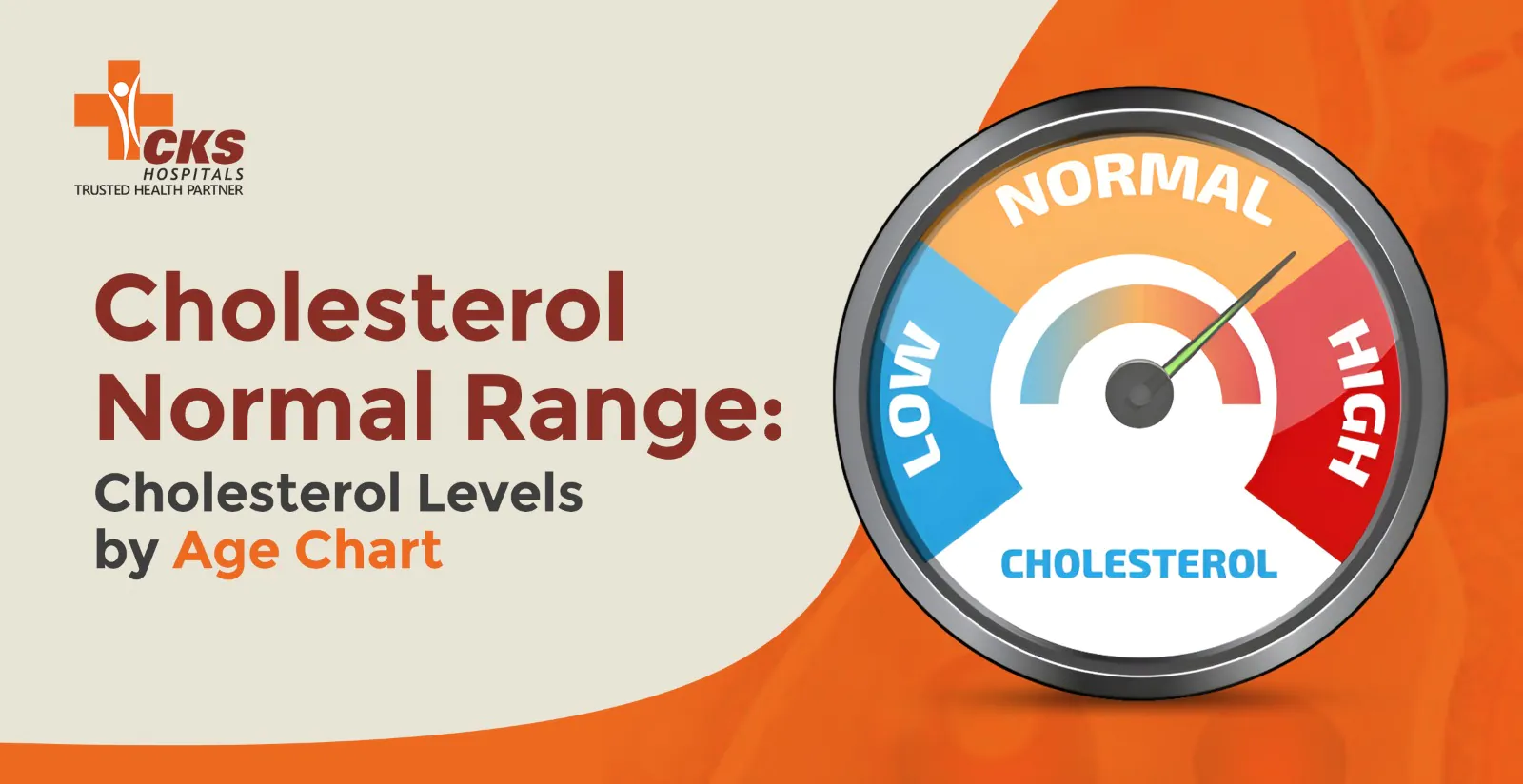
Cholesterol Normal Range: Cholesterol Levels by Age Chart
To keep your heart healthy, you need to know what your cholesterol levels are. Knowing what is normal for people of different ages can help with prevention and therapy. Based on reliable clinical standards, this is your go-to guide:
What is Cholesterol and Why It Matters
Cholesterol is a fat-like molecule that cells need to stay healthy, make hormones, and break down food. An imbalance, on the other hand, can raise the risk of heart disease, especially if there is too much LDL (bad cholesterol). Higher HDL (good cholesterol), on the other hand, protects against heart disease. Checking these levels on a regular basis helps with early action.
Cholesterol Levels by Age: What’s Considered Healthy
| Age Group | Total Cholesterol | LDL (Bad) | HDL (Good) | Triglycerides |
| 19 & Younger | Below 170 mg/dL | Below 110 mg/dL | Above 45 mg/dL | Below 150 mg/dL |
| Adults (20+) | 125–200 mg/dL | Below 100 mg/dL | ≥40 mg/dL (men); ≥50 mg/dL (women) | Below 150 mg/dL |
| Seniors (65+) | 125–200 mg/dL | Optimal: 70–100 mg/dL | ≥50 mg/dL | Below 150 mg/dL |
Why Age Matters in Assessing Cholesterol
The normal levels of cholesterol change with age and gender. For instance, HDL goals are greater for women (≥50 mg/dL) than for men (≥40 mg/dL). Regular screening is very important since cholesterol can stay high without showing any symptoms, which might raise the risk of heart disease in the long term.
What Counts as High Cholesterol?
- Total Cholesterol:
- Borderline: 200–239 mg/dL
- High: ≥240 mg/dL
- Borderline: 200–239 mg/dL
- LDL (“Bad”) Cholesterol:
- Near-optimal: 100–129 mg/dL
- Borderline high: 130–159 mg/dL
- High: 160–189 mg/dL
- Very high: ≥190 mg/dL
- HDL (“Good”) Cholesterol:
- Desirable: ≥60 mg/dL
- Triglycerides:
- Normal: <150 mg/dL
- High: ≥200 mg/dL
Why Tracking These Numbers Matters
High levels of LDL can cause blockages in the arteries, which raises the risk of heart attack or stroke. Most cholesterol comes from the liver, therefore diet is important, but genetics and metabolism also influence.If your cholesterol is high, consulting the best cardiologist in Jaipur can help you get an accurate diagnosis and the right treatment plan.
How Often Should You Get Tested?
- Children and teens: First test between ages 9–11; repeat every 5 years
- Adults: Every 4–6 years for those with no risk factors; more frequent monitoring if older or with existing health issues
Tips to Maintain Healthy Cholesterol
- Focus on diet: Reduce saturated and trans fats; incorporate soluble fiber and plant-based foods
- Stay active: Regular exercise raises HDL and lowers LDL
- Routine screening: Early detection allows timely lifestyle or medical interventions
- Personalized goals: Certain conditions require more aggressive LDL targets (e.g., <70 mg/dL)
Wrap-Up
For heart health, it’s important to keep an eye on your cholesterol levels and live a healthy lifestyle. Look at the chart above to see where you are in terms of age. If your results are not in a healthy range, visit Dr. Prakash Chandwani — a trusted interventional cardiologist in Jaipur — for personalized advice, preventive strategies, and advanced treatment options.

